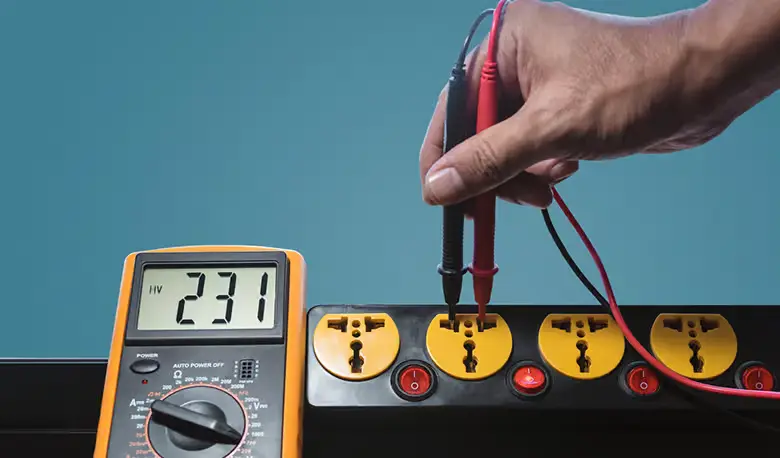
If you ever experienced the dimming lights, flickering appliances, or a very slow-running motor in your home, then there’s a good possibility that you’re facing issues of low voltage. Low Voltage can be identified as a set of frustrating problems causing various electrical devices affecting their performances and lifetimes. In this article, we’d look deep into causes of low voltage found in the house how one could remedy and prevent such issues.
Understanding Voltage and Its Importance
Voltage is an important concept in the world of electricity with its intricately woven power. It plays a very important role in powering our homes and making modern life convenient down under. It refers to the electrical pressure or force that drives the flow of electrons through electrical circuits thus providing said energy needed for operation of various appliances and devices. The standard household voltage in Australia runs at 240 volts, this level carefully chosen and specified so as to ensure optimal performance and safety.
When discussing electricity, voltage is similar to the force that pushes water through a pipe. Just as it’s decided by water pressure how fasted water moves, what speed and strength electrons move along conductors like wire, so too does Voltage dictates what speed and strength electrons move along conductors like wire. In the context of Australian Household Electricity, the flow of electrons powers everything from lights and refrigerators computer devices amongst others.
Common Signs of Low Voltage
Low voltage in the electrical system is not as insignificant, but can result in various problems and complications hence impacting performance and safety of appliances as well. It is important to recognize the common signs above so that a timely action may be taken to prevent further problems. Here are some common signs which indicate that your electrical system might be having low voltage:
- Overloaded Circuits
An overloaded circuit happens when you attach too many electrical devices to just one single circuit so that its capacity gets exceeded. In this situation, voltage drops down. - Faulty Wiring
Damaged or outdated wiring can hinder the smooth flow of electricity, resulting in voltage fluctuations. - Damaged Power Lines
External threats like storms or accidents lead to power line damage which causes decreased voltage. - Malfunctioning Transformers
Malfunctioning transformers responsible for adjusting voltage levels from the main power lines to household levels can cause low voltage problems. - Faulty Electrical Appliances
Defective electrical appliances pull more electricity than normal. When a drop occurs in voltage, it affects your whole electric system. - Voltage Regulation Problems
Voltage regulators control a steady voltage flow. Issues with regulators lead to low voltage scenarios.
A qualified electrician is needed to help in the resolution of low voltage issues. They can perform a thorough inspection of the electrical system, pinpoint actual causes of low voltage, and undertake suitable solutions. The solutions might be upgrading electrical infrastructure or redistribute loads replacement for faulty components addressed on problems with relation to power grid.
The Dangers of Low Voltage
Experiencing low voltage in your house can lead to various safety and financial risks:
- Fire Hazards
The risk of an appliance and wiring overheating causing low voltage situations increases with low voltage situations. This makes the appliances prone to catch fire. - Appliance Damage
Electrical appliances subject to low voltage cannot be repaired or replaced for their condition if damage is irreversible. They become costly for the consumers either way. - Electrical Shock Risks
Low voltage might lead to unpredictable electrical behavior hence increasing the chances of accidental electric shocks.
How to Diagnose Low Voltage
If you suspect low voltage in your house, follow these steps to diagnose the issue:
Use a Voltage Meter
A voltage meter helps you measure levels of the voltage at various outlets and gives an idea of any fluctuation.
Check the Main Electrical Panel
Check for any tripped breakers or blown fuses on the main electrical panel that might be causing low voltage problems.
Inspect Wiring and Circuits
Examine the electrical wiring and circuits for signs of damage or overloading.
Fixing Low Voltage Issues
Here are some actions you can take to address low voltage problems:
- Unplug Non-Essential Appliances
Reduce the load on your electrical system by unplugging non-essential appliances. - Balancing Electrical Load
Distribute the electrical load evenly across different circuits to prevent overloads. - Repairing or Replacing Faulty Wiring
If you notice damaged wiring, have it repaired or replaced by a qualified electrician. - Seeking Professional Help
For complicated issues or you’re not so sure about the cause of low voltage, get professional assistance from an electrician.
Preventing Low Voltage in the Future
Taking proactive measures can help prevent low voltage occurrences:
- Regular Electrical Maintenance
Schedule regular electrical maintenance to identify and resolve potential issues, not create them. - Upgrading Electrical Systems
Consider upgrading your electrical system to: -handle the demands of modern appliances and technology. - Using Quality Electrical Appliances
Invest slowly in quality electrical appliances that are energy-efficient and have no tendency to cause voltage fluctuations. - Monitoring Electrical Consumption
Keep track of your electricity usage and see if there are patterns that might be leading to low voltage situations.
Hiring a Professional
An electrical problem in our home might be very much a burden considering the low voltage problem. Low voltage not only affects the efficiency of electrical appliances but also poses serious safety risks. When some homeowners feel like tackling electrical issues ourselves, it is important to know all the benefits you would get if you let a professional tackle low volt problems.
Hiring a professional electrician ensures safe and efficient as well as long-term resolution, which gives you peace of mind. Always bear in mind that attempted DIYs cost you plenty in the form of safety problems plus damage to property. So whenever there are low voltage issues, don’t even think about it; call on qualified electrical professional immediately.
Contact us today for help!

